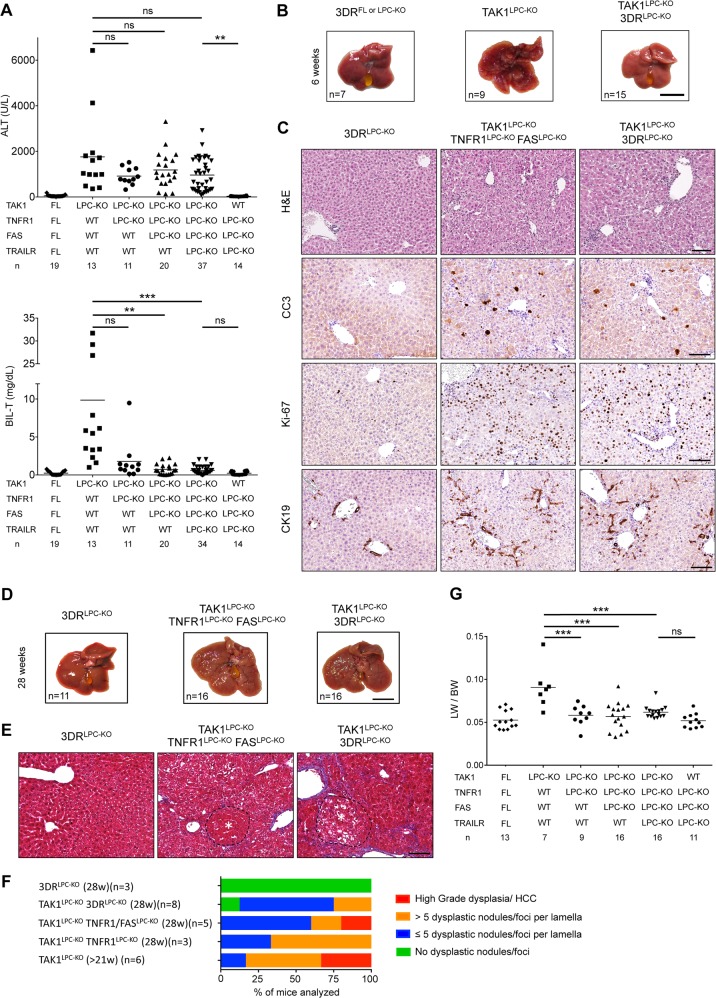Fig. 7.
Death receptor signaling drives biliary but not hepatocellular damage, and significantly delays hepatocarcinogenesis in TAK1LPC-KO mice. a Serum levels of ALT and total Bilirubin in 6-week-old mice with the indicated genotypes. b Representative liver images from 6-week-old animals with the indicated genotypes. c Representative images of liver sections from 6-week-old mice with the indicated genotypes stained with H&E or immunostained for CC3, Ki-67 and CK19. d, e Representative liver photos (d) and images of liver sections stained for Masson’s trichrome (e) from 28-week-old mice with the indicated genotypes. Dysplastic nodules are outlined and marked with an asterisk. f, g Histopathological evaluation of hepatocarcinogenesis (f) and LW/BW ratio (g) in 28-week-old mice with the indicated genotypes. The number of mice analyzed (n) is indicated in every graph. All graphs show mean values of the individual data points. *p < 0.05, **p < 0.01, ***p < 0.005. Bars: b, d 1 cm; c, e 100 μm

